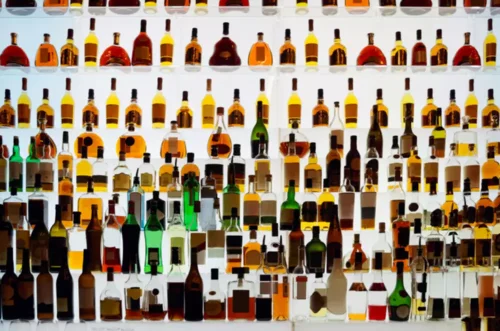
Furthermore, alcohol is recognized as a Group 1 carcinogen by the World Health Organization (WHO), implicating it in the development of several types of cancer, including but not limited to liver, breast and esophageal cancer. The mechanisms by which alcohol exerts its carcinogenic effects include the damage to DNA, the impairment of the body’s natural repair processes and the promotion of harmful chemical production within the body. According to studies, the presence of alcohol in the system significantly reduces the availability of glucose, which is an essential energy source for muscles during exercise. Alcohol is a chemical that gets metabolized in the liver into acetaldehyde, which is a highly toxic byproduct.
Why Do People Use Cocaine When Drinking Alcohol?
- After a demanding workday, alcohol can offer a temporary escape, providing a sense of relaxation and detachment from workplace pressures.
- Sometimes, people find solace in drinking to ease the tension in their work-life.
- It’s important to understand the issues that can come with drinking after work and when it’s time to stop.
- The Recovery Village at Palmer Lake offers comprehensive addiction treatment for drug and alcohol addictions and co-occurring mental health conditions.
- They may notice that you take a lot of sick leave or that you’re often late to work.
Exercise, particularly prolonged or high-intensity routines, naturally places stress on the body as part of the adaptive process that helps you grow stronger. This stress triggers temporary responses in organs like the heart, liver, and kidneys, which are normal in healthy individuals. Many employees properly use prescribed or over-the-counter drugs, such as sleeping aids, cold medicine, or painkillers.

Office Location
Furthermore, workplace drinking culture can vary significantly across industries, yet the consequences often bear similar traits, including reduced productivity, compromised safety, and strained professional dynamics. Heavy drinking during the workweek contributes to a prevalence of alcohol-related health problems among workers, inevitably affecting the productivity of firms. A staggering 42% of workers admitted to having gone to work hungover drinking after work or under the influence of alcohol, with 9% doing so in the past six months alone (source). The phenomenon of after-work drinking is intricately linked with workplace culture and social bonding. However, such gatherings can also lead to less desirable outcomes, including unfiltered speech, unplanned commitments, and unprofessional conduct (TLNT). Drinking during work hours or work-related events requires a careful approach.
Strategies to Avoid Employees Drinking at Work and After Hours
- “The stereotypes of the alcoholic as less reliable, trustworthy or productive are based on outdated beliefs and assumptions about addiction,” she said.
- Research indicates that after-work drinking cultures are often characterized by norms around drinking patterns, practices, settings and occasions, which are enforced to varying degrees across different societies.
- In this case, the drink would fill the need of wanting to switch off from ‘work/mum mode’ and relax into the evening.
- As workplace drinking culture comes under scrutiny, it becomes clear that alternative, more inclusive team-building activities should be explored to foster a healthy work environment.
While some workplaces may have a culture of casual drinking, it’s important to remain professional and aware of your limits. Overindulgence can lead to inappropriate behavior and impaired judgment, tarnishing your professional reputation. If you find yourself regularly drinking to get through the workday, it might be time to reassess your relationship with alcohol and seek support if necessary.
My first media job kept a few bottles of vodka, whiskey, and tequila on a bookshelf and sponsored an annual booze-soaked weekend at a resort with the Texas side of the operation. My next company installed an actual bar—complete with a huge vintage mirror and stocked mostly with Jägermeister—inside the office. Whether you are struggling with addiction, mental health or both, our expert team is here to guide you every step of the way. Don’t wait— reach out today to take the first step toward taking control of your life. “The employer couldn’t simply chuckle at employee A, who isn’t an alcoholic, for coming to work hung over after a night of binge drinking while disciplining employee B, who is an alcoholic, for doing the same thing,” she said.


These are just a few of the many different reasons why a person may experience stress and turn to drugs or alcohol for relief. Such technology is already a part of many workplaces and will continue to shape the labor market and HR. Here’s how employers and employees can successfully manage generative AI and other AI-powered systems. ADA accommodations might alcoholism include time off to attend Alcoholics Anonymous meetings or other rehabilitation.

A visit to the gym or a yoga class can replace the typical happy hour, offering both mental and physical benefits. There are numerous healthier alternatives that can help reduce stress and improve overall well-being. Engaging in physical activities like establishing an exercise routine can be a great way to let off steam. As awareness grows, there is an increasing call for more inclusive, alcohol-free workplace activities that cater to all preferences.
Break Free From Alcohol Addiction — Get Help Today

These programs focus on setting personal drinking limits and goals within a safe, supportive environment. However, it is important to note that while moderate drinking may work for some, abstinence remains one of the most effective methods for those with alcohol use disorders. Employers should avoid sponsoring after-work drinks unless they also take measures to monitor for intoxication and provide safe rides.
- An employer can, however, make a decision (including a decision to discipline or terminate an employee) based on the employee’s inability to meet the same performance and productivity standards that it imposes on all employees.
- Drug and alcohol addictions can wreak havoc on a person’s life if left untreated.
- There are those at the professional level who also struggle with the same problems.
- This may be why 14% of respondents admitted that, on at least one occasion, they’ve acted inappropriately during afterwork drinks.
Is Your Lack of Sleep Sabotaging Your Runs?
This type of drinking behavior can also produce immediate changes in circulation, heightening the risk of cardiovascular disease in otherwise healthy young adults, as outlined by the American College of Cardiology. As workplace drinking culture comes under scrutiny, it becomes clear that alternative, more inclusive team-building activities should be explored to foster a healthy work environment. Organizational cultures differ in how they manage social control of drinking norms. In some settings, mechanisms for social control are disabled, while in others, they are enabled, shaping the drinking behaviors of employees. The presence of liquor stores in certain communities, particularly among minority populations, can increase access to alcohol, influencing social drinking habits. Furthermore, cultural factors such as beliefs, attitudes, subjective norms, and expectancies about alcohol use play a critical role in shaping individual and group drinking behaviors.
